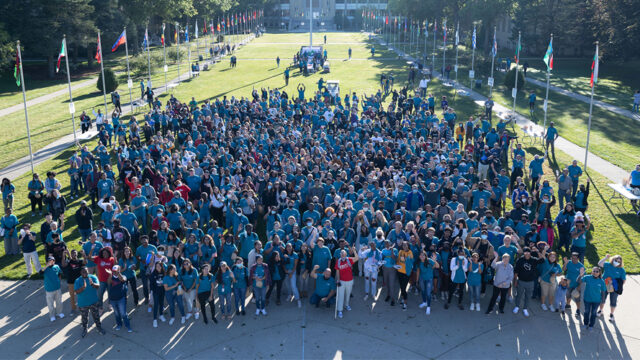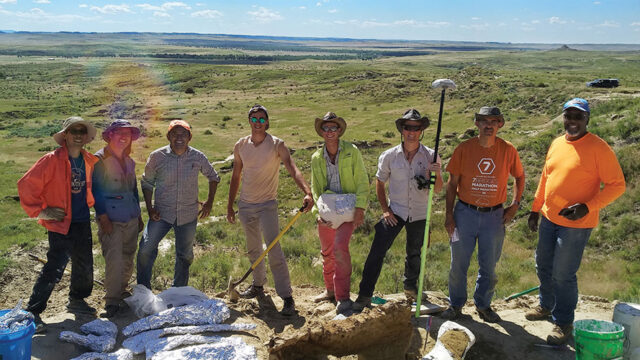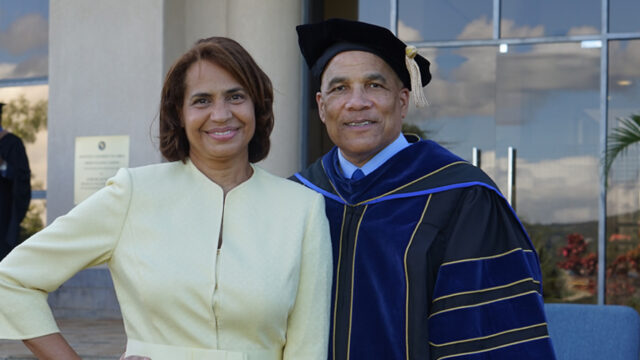How is kindness a key principle of the gospel?

The past few years have been unusually challenging. While boasting many advances, they have been characterized by a pandemic, wars and other violent aggressions, more prevalent and open microaggressions, and a general break down in human civility throughout the world. Some have projected that these are just forerunners of what is to come. As we analyze our condition and ponder possibilities for the future, many look to changes in the individual heart for the better. More than ever, these past years have seen cries from the world for kindness—basic kindness.
Pleas for Kindness
In a January 2022 commentary a physician pleaded for kindness toward nurses caring for COVID-19 patients after a phone encounter with an irate, aggressively rude, and no doubt frustrated and scared caller who inquired about a patient’s condition.1
In November 2021 a stunned mother pleaded for kindness after her 10-year-old son received his burrito order labeled with the word “stupid” from a popular fast-food restaurant.2 A May 2020 article in Psychology Today reported, under the title “A Plea for Kindness,” a passionate appeal from Dr. Anthony Fauci, the then-director of the National Institute of Allergy and Infectious Diseases in the USA. Fauci, speaking virtually, called the graduates at his alma mater to “care selflessly.”3 A simple online search of news items will reveal a growing number of such appeals for kindness.
These have taken on many forms, from public speeches and sermons to automobile license plate slogans, family resolutions, and magazine and journal special issues. Perhaps you have seen the license plate messages comprised of symbols representing the world’s major religions that spell out the word “civility,” “tolerance,” or “coexist.” The implication is that religion or faith in a higher being should bring people together in positive relationship.
Interestingly, scores of commercial magazines and periodicals have made this quest for kindness a priority over the past few years in publishing special editions on the subject. A Time magazine special edition in 2020, for example, is titled, “The Power of Kindness: Creating a Better Life and a Better World.” It carried articles on the science and culture of kindness and offered readers ideas on how to be kind through examples of people, animals, and organizations.4
Defining the Concept of Kindness
So what is kindness? I asked several people to share with me their personal definition of kindness in a sentence or two. Respondents agreed that kindness is consideration and compassion for others—that it comes from the individual heart and is evidenced by sharing time, talents, thoughts, and treasures without expectation of receiving anything in return.
Kindness is an attitude of empathy that moves someone to do something thoughtful toward someone else, including strangers. It is the golden rule—treating others the way we’d want to be treated. All agreed that kindness at its base is purely altruistic, that when one does something with the expectation of reciprocity the act is not, in fact, kindness. Researchers call this “reciprocal altruism,” which is a “transactional business of making deposits in the favor bank with the understanding that you can later make withdrawals as needed.”5 This is self-centered.
One writer defines kindness as “society’s golden chain.”6 The online Cambridge Dictionary defines kindness as “the quality of being generous, helpful, and caring about other people.”7 Webster’s dictionary is more detailed regarding kindness, defining it as “good will; benevolence; that temper or disposition which delights in contributing to the happiness of others, which is exercised cheerfully in gratifying their wishes, supplying their wants or alleviating their distresses; benignity of nature. Kindness ever accompanies love.”8
The Tyndale Bible Dictionary defines kindness as a “state of being that includes the attributes of loving affection, sympathy, friendliness, patience, pleasantness, gentleness, and goodness. Kindness is a quality shown in the way a person speaks and acts. It is more volitional than emotional.”9
The Holman Illustrated Bible Dictionary uses Old Testament language, defining kindness with the translation of the Hebrew term khesed. It demonstrates that throughout the Old Testament the concept is that of compassion and faithfulness to relatives, friends, and others under your influence.10 It looks to original New Testament terminology, chrestotes, for the concept of kindness as gentleness, goodness, uprightness, generosity, and graciousness. Here it describes kindness as an attribute of God (Titus 3:4), a characteristic of true love (1 Cor. 13:4).11
Research on Kindness
The general fascination with the concept of kindness has spawned more scientific studies on the topic recently. For instance, after observing a lack of ways to measure kindness, researchers constructed a scale for identifying, analyzing, and gauging acts of kindness. Their study provided a multilayered definition that includes four aspects of kindness and a core element that appears to bind all together.12
“Principle-socially prescribed kindness . . . is generated cognitively rather than emotionally. It is thought to align with social graces and is manifested in sympathetic behavior. It makes mental allowances for the actions of others. It tends to put others before self, such as allowing others to go ahead in a queue or patiently waiting for others.
“Principle-proactive kindness is also cognitive rather than emotional in nature, but goes beyond the passive permissive actions of principle-socially prescribed kindness. It is demonstrated through giving, such as donating blood or giving money to strangers asking on the street.
“Affective-proactive kindness includes emotional responses to the needs of others. It does not rely on social norms for guidance, but rather is inner-driven and personally empathetic. It often involves sacrifice, endurance, and personal suffering to favor others, such as seeing situations from others’ viewpoint, aligning with unpopular causes or persons to uphold right, or giving up one’s desires for others. It is principled in nature.
“Affective-socially prescribed kindness is emotional behavior that aligns with social norms. It is empathetic, but is motivated by circumstance rather than principles. It is friendship-based and manifests itself through responses to simple needs such as opening doors for others or helping others when asked in ways consistent with social expectations. Interestingly, it was noted that most people think of kindness in these latter terms.” Then there is the core form of kindness from which these four appear to emerge, and that is the glue that holds all together. It includes concern for people who are less fortunate or feeling protective for those who are oppressed or abused, seeking to include or provide for others’ happiness. While the scientific measures are complex, the related insights are simple and generally comprehensible. They offer much to understanding the concept of kindness.
The Value of Kindness
In an age when dialogue turns sour, how do Adventists stay above the fray and respond with kindness at work, church, in our circles of influence, and to people who do not agree with us? Why do we need kindness so critically in these last days? How is kindness a key principle of the gospel?
Ellen White appeals: “Let the law of kindness be upon your lips and the oil of grace in your heart. This will produce wonderful results. You will be tender, sympathetic, courteous. You need all these graces.”13 She says, “Your influence reaches the soul; you touch not a wire but that vibrates back to God. . . . It is your duty to be Christians in the highest sense of the word—‘Christlike.’ . . . Otherwise, if you are selfish, if you are self-exalted, if you are worldly minded, no matter what your position, no matter what your experience has been, or how much you know, if you are not having the law of kindness on your lips, [the] sweet fragrance of love springing from your heart, you can do nothing as it ought to be done.”14
She charges, “Seize every opportunity to contribute to the happiness of those around you, sharing with them your affection. Words of kindness, looks of sympathy, expressions of appreciation, would to many a struggling, lonely one be as a cup of cold water to a thirsty soul. . . . [We are to] live in the sunshine of the Saviour’s love. Then your influence will bless the world. Let the Spirit of Christ control you.
Let the law of kindness be ever on your lips.”15 What’s more, she says, “The effort to bless others will react in blessings upon ourselves.”16
Kindness positively affects both the recipient and the giver. Being kind simply makes us happy. We have known from experience that doing good to others makes us feel good about ourselves, and that this state of mind has positive physical effects as well. Research has shown that the happiest nations on earth tend to be those in which equity is greatest, while nations with high levels of inequality tend to be less happy.17
A 2007 study in the Journal of Science reported that when people donate money to charity, whether voluntarily or by requirement, pleasure-linked parts of the brain react.18 Mounting bodies of research are demonstrating that “compassion reduces anxiety, depression and stress and may also boost immunity—along with longevity.”19 “Simply witnessing an act of compassion triggers feelings of awe, admiration, warmth and love. . . . At the same time, it increases your desire to be more charitable yourself.”20
Biblical Exhortation
Sacrificial kindness is a good choice all around. So why is it that sacrificial kindness is not as prevalent as one should expect? What makes some prone to kindness and others not so much? “The Candle of Kindness,” an article written from a secular perspective, poses the most basic questions regarding the existence of kindness in the world:
“What explains the highest impulses born in the highest places? What explains soldiers who dive on grenades to save platoon-mates, sacrificing their own lives . . . to ensure life to others? What explains the first responders who dash into natural disasters when the floodwaters are still rising or brave the sites of terrorist attacks when the fires are still burning, putting their welfare in danger to save others? What explains all of the health-care providers who are risking—and in some cases losing—their lives to stay at their posts during the coronavirus pandemic?”21
While the questions may come from a secular view, the answers must come from a spiritual base. Certainly there is a power beyond us, our loving God, who is the source of this self-sacrificing kindness.
Perhaps we are most familiar with kindness as one of the fruits of the Spirit. In his exposition of the fruit of the Spirit, the apostle Paul lists kindness right in the center of all. It’s the heart of Christlikeness. He exhorts the believers in Galatia
to throw off the works of the flesh and take on the fruit of the Spirit: love, joy, peace, longsuffering, kindness, goodness, faithfulness, gentleness, and self-control.
He includes kindness again in his letter to the Colossians when he calls them to clothe themselves as God’s people in kindness, along with compassion, humility, gentleness, patience, meekness, and longsuffering, bearing with one another, and forgiving one another (see Col. 3:12, 13). Paul pointed the Romans to kindness, indicating that God’s kindness is intended to lead them to repentance. He urged them to consider the kindness and sternness of God and to continue in kindness to avoid being cut off from God’s kingdom (see Rom. 11:22).
Inspired by the kindness and the love of God, believers should be gracious, gentle, and forgiving toward others. As a witness to the world, our behavior toward others should reflect God’s graciousness, His loving-kindness, toward us.22
When we accept Jesus into our lives, a new power begins to operate within us. The old negative perspectives and selfish desires can be discarded. Kindness becomes our nature. This loving-kindness produces in us a love for all humanity as equal creations, children of God. It is, in the original language, human kindness toward another, the graciousness of a sovereign toward a subject, and the sympathy of humankind for those in trouble. All are facets of God’s love (in Greek, agapē; see on 1 Cor. 13:1).23
Developing Kindness
While there are probably as many ways to develop traits of kindness as there are cultures and people in the world, I will leave you with a few observations. Perhaps the most obvious is modeling desired traits, especially when trying to teach children and youth to be kind. For both younger and older learners, provide books or videos that share stories of kindness.
Create a culture of giving and helping in the family circle, church congregation, and social community. Intentionally seek out those in need and lead your group to respond with kindness as needed. Without flattering, find ways to celebrate acts of kindness, especially those that extend beyond the immediate family and cultural group.
Let us be the gold standard for kindness at all times, in all places. An unknown voice calls out to us: “If you can be anything, be kind.”
1 David Tam, “A Plea for Kindness, Compassion,” Commentary, Cape Gazette, Jan. 18, 2022, Capegazette.com.
2 Daniel Woodruff, “Mom Pleads for Kindness After ‘Stupid’ Written on Utah Boy’s Fast Food,” KUTV Utah, Nov. 23, 2021, https://www.kutv.com.
3 Susan Hooper, “A Plea for Kindness,” Psychology Today, May 28, 2020, https://www.psychologytoday.com/us/blog/detours-andtangents/202005/plea-kindness.
4 J. Kluger, “The Candle of Kindness. The Power of Kindness: Creating a Better Life and a Better World,” Time, Special Edition, 2020, p. 5.
5 Ibid.
6 Lee Rowland, “Kindness—Society’s Golden Chain?” The Psychologist, British Psychological Society, Nov. 13, 2017.
7 Cambridge Dictionary, 2023, https://dictionary.cambridge.org/us/ dictionary/english/kindness.
8 American Dictionary of the English Language, 2023, https:// webstersdictionary1828.com/Dictionary/kindness.
9 W. A. Elwell and P. W. Comfort, eds., Tyndale Bible Dictionary (Carol Stream, Ill.: Tyndale House Publishers, 2001), p. 773.
10 J. Cathey, “Kindness,” in Holman Illustrated Bible Dictionary (Nashville: Holman Bible Publishers, 2003), p. 984.
11 Ibid.
12 D. E. Youngs, M. A. Yaneva, and D. V. Canter, “Development of a Measure of Kindness,” Current Psychology (2021), International Research Centre for Investigative Psychology, School of Human and Health Sciences, University of Huddersfield, Ramsden Building, Queensgate, Huddersfield, UK., https://doi.org/10.1007/ s12144-021-01882-6.
13 Ellen G. White letter 84, 1899.
14 Ellen G. White letter 37, 1891.
15 Ellen G. White, Testimonies for the Church (Mountain View, Calif.: Pacific Press Pub. Assn., 1948), vol. 7, p. 50.
16 Ellen G. White, Steps to Christ (Mountain View, Calif.: Pacific Press Pub. Assn., 1956), p. 79.
17 M. Heid, “The Evolution of Kindness. The Power of Kindness: Creating a Better Life and a Better World,” Time, Special Edition, 2020, p. 14.
18 Ibid., p. 13.
19 C. N. Pagan, “The (Real!) Secret to Happiness. The Power of Kindness: Creating a Better Life and a Better World,” Time, Special Edition, 2020, p. 81.
20 Ibid.
21 Kluger, pp. 4, 5.
22 J. L. Dybdahl, ed., Andrews Study Bible Notes (Berrien Springs, Mich.: Andrews University Press, 2010), p. 1594.
23 F. D. Nichol, ed., The Seventh-day Adventist Bible Commentary (Washington, D.C.: Review and Herald Pub. Assn., 1980), vol. 7, p. 370.








